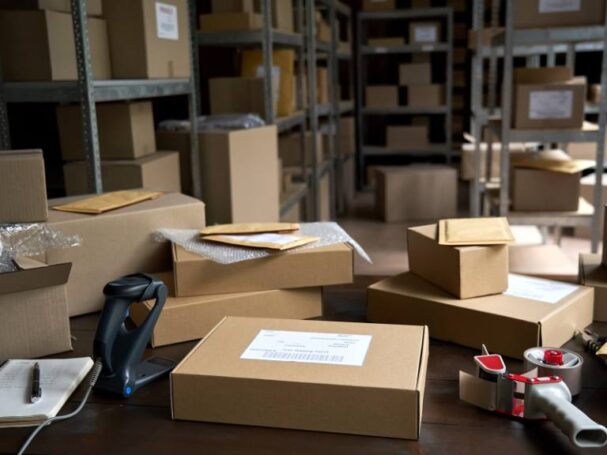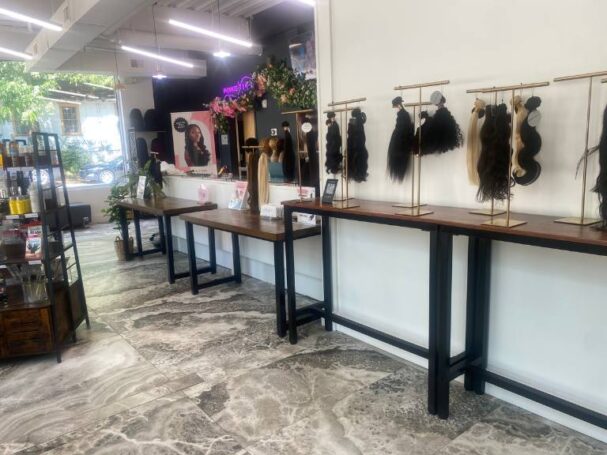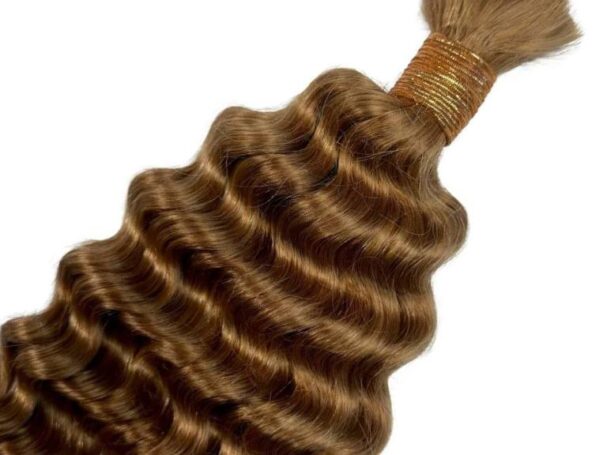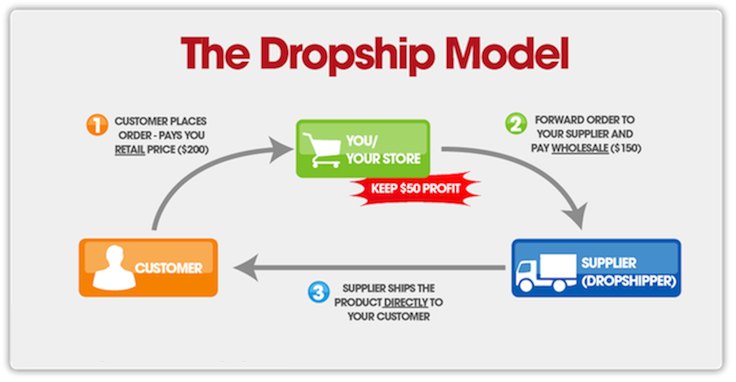Which one wins in dropshipping hair vs. wholesale?
Starting a business is exciting, but there are many things that go into creating an entrepreneurship venture for yourself.
You want to also decide how you want to price your goods, brand them, and even deliver them. As you might already know, all of these decisions can feel overwhelming.
If you are looking to sell hair extensions and have done some research, you will find that there are two popular business models in the beauty industry: the traditional method and dropshipping. 📦
What makes the difference is where your products are at any point in time. But which one is better? As a new business owner, what are the pros and cons of each of them?
Let’s check out the differences between dropshipping and traditional retail, especially when it comes to the hair extension and wigs business.

What Is Dropshipping?
Dropshipping is a method where you never physically handle the products you sell.
You set up an online store and list products for sale. When an order comes in, you purchase the item from a supplier, who ships it directly to the customer.
Essentially, you act as the middleman. This model is popular because there are minimal startup costs and zero need for storage space.
Pros of Dropshipping Hair
- Low Startup Costs: Since you don’t need to buy inventory upfront, your initial expenses are much lower. You only pay for products when you make a sale. If you have a dropship partner like Dropship Beauty or Dropship Bundles, all you need to do is subscribe to their service, and they will handle everything for you.
- No Inventory Hassles: You do not need to manage storage, track inventory, or deal with product packaging. You don’t even have any touch points with the product. Only customer service will be your priority.
- Work from Anywhere: Since everything is handled online, you can run your business from anywhere with an internet connection. You can even work from home.
Cons of Dropshipping Hair
- Lower Profit Margins: Since you’re purchasing products individually rather than in bulk, your profit margins are often lower. You will not make as much profit as you would expect. It also depends on your pricing techniques.
- Less Control: You’re dependent on suppliers for product quality and timely shipping. If something goes wrong with an order, you’re at the mercy of the supplier’s customer service.
- Customer Service Challenges: If a customer experiences an issue with the product, it can be harder to resolve since you’re not physically handling the products.

What Is Traditional Retail or Wholesale?
In this model, you buy your products in bulk, store them physically, and sell them directly to customers.
You can do your sales online or in a physical store. It often requires a larger upfront investment and dedicated space for inventory.
However, it gives you more control over the product quality and your customer service.
Pros of Wholesale
- Control Over Inventory: Traditional retail helps you ensure the quality of your products and keep track of stock levels.
- Better Profit Margins: Since you’re purchasing items in bulk, you can typically buy at a lower cost and sell at a higher price.
- Enhanced Customer Experience: With control over inventory, packaging, and shipping, you can provide a personalized customer experience.
Cons of Wholesale
- High Startup Costs: Buying products in bulk and securing storage space for inventory is often expensive.
- Inventory Management: You need to manage your stock, which can be time-consuming and costly.
- Location-Bound: If you operate a physical store, your customer base is limited to the area around your shop.

Key Differences Between Dropshipping Hair vs. Wholesale
Cost
The most important thing for a new business is the cost breakdown.
It is a determining factor to which model works best for you. Here are the differences in cost investment.
- Dropshipping:
- Low Initial Costs: No need to buy inventory upfront.
- No Storage Costs: You don’t need to pay for warehouse or storage space.
- Main Expenses: Primarily social media marketing and online store setup.
- Lower Risk: Minimal financial commitment to start the business.
- Traditional Retail:
- High Initial Costs: You need to purchase inventory in bulk, which requires a significant upfront investment.
- Storage Costs: You must pay for warehouse space or a physical retail store.
- Ongoing Costs: Includes costs for managing inventory, shipping, and handling.
- Potential for Higher Profits: Higher profit margins per sale, especially if you manage inventory efficiently.

Dropshipping Hair vs. Wholesale: Control and Flexibility
Both models come with their own levels of control and flexibility, but they differ significantly in how they allow you to run your business.
- Traditional Retail:
- More Control: You have complete control over inventory, product quality, and customer service. You can ensure your customers receive the best experience.
- Less Flexibility: Managing inventory and logistics can tie you to a physical location, limiting your ability to scale easily.
- Fixed Inventory: If you have leftover stock, you’ll have to sell it off, which could limit cash flow.
- Dropshipping:
- Less Control: You rely on suppliers to maintain product quality and delivery times.
- More Flexibility: You can run your business from anywhere, and switching products is easier since you don’t have to worry about unsold inventory.
- Scalability: It’s much easier to scale a dropshipping business because you don’t have to worry about storage or managing a large amount of stock.

Dropshipping Hair vs. Wholesale: Factors to Consider
If these differences have still not given you enough to make a decision, then hopefully, these factors in how your business will go should set a clear preference between both of them.
- Target Market: Understand your audience’s preferences. Do they prefer to shop online, or do they want to feel and touch the products before buying?
- Product Type: Hair extensions can be well-suited for dropshipping, especially if you’re offering a wide variety of styles. However, if you’re planning to sell premium hair extensions or bundles, traditional retail might be better for quality control.
- Financial Investment: Dropshipping has low startup costs, while traditional retail requires a larger initial investment.
- Control and Management: If you value having control over inventory and customer experience, traditional retail may be a better fit.
- Long-Term Goals: Dropshipping allows for faster scaling, but traditional retail offers more long-term stability if managed correctly.

Dropshipping Hair vs. Wholesale
Both dropshipping and traditional retail models have their benefits and challenges.
If you are more on a budget, dropshipping is a great option for you to start with low costs and little risk.
Meanwhile, traditional retail gives you more control and potentially higher profits. 💸
The best choice depends on what business goals you have, the products you want to sell, and your personal preferences.

